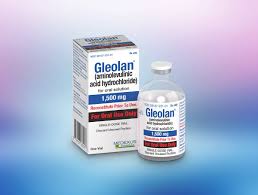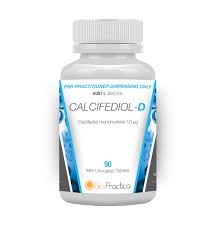Zyprexa Relprevv

Zyprexa Relprev is a distinguished medication designed to address mental health disorders such as schizophrenia and bipolar disorder. It belongs to the esteemed category of antipsychotics, which function by harmonizing specific neurotransmitters within the brain. This formulation is an extended-release variant of olanzapine, ensuring a gradual release into the system, thereby offering prolonged therapeutic effects.

What Purpose Does Zyprexa Relprev Serve?
Zyprexa Relprev is chiefly employed to alleviate the symptoms associated with schizophrenia and bipolar disorder. Schizophrenia profoundly influences an individual’s cognitive, emotional, and behavioral states, often leading to experiences of hallucinations or delusions. Conversely, bipolar disorder is characterized by dramatic mood fluctuations, encompassing episodes of mania—marked by heightened energy—and depression, which can evoke feelings of despair and hopelessness.
This medication plays a pivotal role in managing these symptoms by modulating brain chemicals such as dopamine and serotonin, which are crucial in influencing mood and behavior.
How Does Zyprexa Relprev Function?
The active ingredient in Zyprexa Relprev, olanzapine, operates by interacting with various receptors in the brain, primarily focusing on dopamine and serotonin receptors that are integral to mood stabilization and cognitive clarity. By achieving a delicate balance of these neurotransmitters, Zyprexa Relprev effectively mitigates the manifestations of psychosis, mood fluctuations, and other mental health challenges.
The “relprev” designation signifies its extended-release formulation, allowing for a gradual and sustained delivery of the medication over an extended duration. This innovative approach enables patients to benefit from consistent therapeutic effects with fewer administration intervals, typically provided through an injection every few weeks.
How is Zyprexa Relprev Administered?
Unlike conventional oral medications, Zyprexa Relprev is administered via an intramuscular injection, typically in the arm or buttock. This procedure is carried out by a qualified healthcare professional in a clinical setting. The medication’s effects are designed to endure for several weeks, ensuring a stable and effective treatment regimen for patients.
The administration of the injection typically occurs once every two to four weeks, tailored to the physician’s guidance and the unique requirements of the patient. It is imperative for patients to adhere meticulously to their healthcare provider’s directives to fully harness the advantages of the treatment.
Zyprexa Relprev, like any pharmaceutical, carries the potential for side effects. While a significant number of individuals find the medication to be well-tolerated, others may encounter some adverse reactions. Among the more frequently reported side effects are:
Weight gain: This is a prevalent concern associated with Zyprexa Relprevv, as patients may notice an increase in their appetite, leading to weight accumulation during treatment.
Drowsiness or sedation: Following the administration of the injection, some individuals may experience a sense of sleepiness or fatigue.
Increased appetite: Users of Zyprexa Relprevv might find themselves feeling hungrier than normal, which can further contribute to weight gain.
Dry mouth: This side effect, while uncomfortable, is commonly experienced and generally manageable.
Dizziness or lightheadedness: Certain patients may feel dizzy or faint, particularly when rising quickly from a seated position.
Though less common, more serious side effects can manifest, including:
High blood sugar (hyperglycemia): Zyprexa Relprevv has the potential to elevate blood sugar levels, which could lead to the onset of diabetes or exacerbate existing diabetic conditions.
Muscle stiffness, tremors, or involuntary movements: These symptoms may indicate a serious condition known as “extrapyramidal symptoms” (EPS), which disrupts muscle control.
Cardiac issues: Zyprexa Relprevv may influence heart rhythms, resulting in irregular heartbeat patterns.
Potential Adverse Effects
As with any medication, Zyprexa Relprev may elicit side effects, although not all individuals will encounter them. Commonly reported side effects may encompass:
– Weight gain
– Drowsiness or a sensation of sleepiness
– Heightened appetite
– Dizziness or a feeling of lightheadedness
– Dry mouth
While serious side effects are less frequent, they may include:
– Elevated blood sugar levels (diabetes)
– Muscle rigidity or tremors
– Cardiac issues (irregular heart rhythms)
– Involuntary movements (tardive dyskinesia)
Should an individual experience any severe side effects or unusual symptoms, it is crucial to reach out to their physician without delay.
Precautions and Considerations
Prior to initiating treatment with Zyprexa Relprev, it is essential to inform the physician of any pre-existing medical conditions, particularly:
– Diabetes or a familial predisposition to diabetes
– Cardiac issues or hypertension
– Liver disorders
– Seizures or epilepsy
– Difficulty in swallowing
The physician will take these elements into account when determining the appropriateness of Zyprexa Relprev for the patient.
Moreover, it is vital to adhere to the prescribed dosage and to avoid abruptly discontinuing Zyprexa Relprev, as this may precipitate withdrawal symptoms. Always consult with the physician before making any alterations to the dosage or ceasing the medication.
Summary
Zyprexa Relprev serves as a valuable therapeutic option for managing mental health disorders such as schizophrenia and bipolar disorder. By offering a sustained release of the medication, it effectively mitigates symptoms with fewer administrations. Nonetheless, it is essential to remain cognizant of the potential side effects and to engage in regular discussions with a healthcare provider to monitor progress and address any concerns. Following the physician’s guidance is paramount to achieving optimal outcomes from the treatment.











